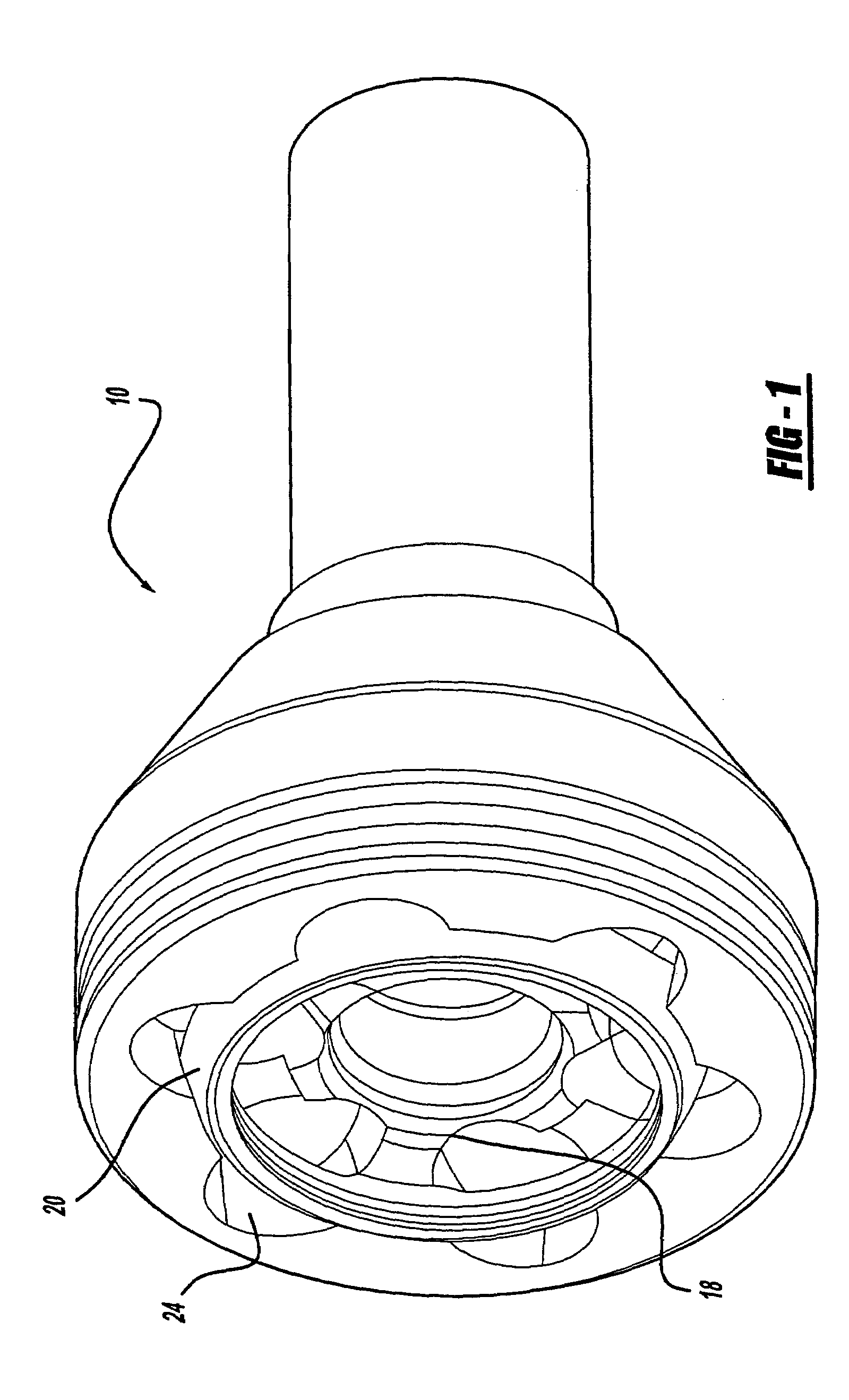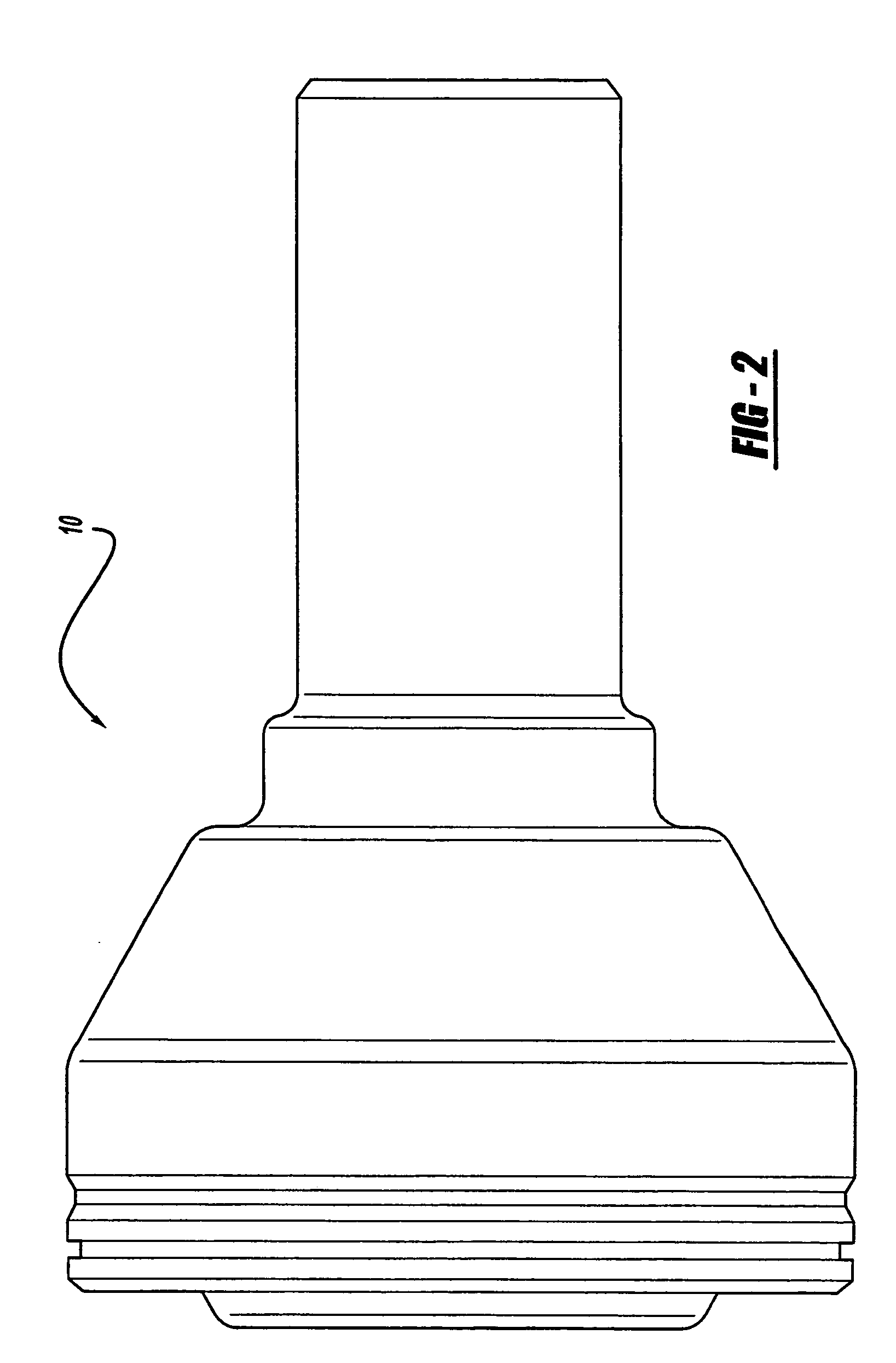Constant velocity joint vent
a constant velocity, joint technology, applied in the direction of yielding couplings, clutches, rotary machine parts, etc., can solve the problems of joint failure, vibration and noise source, and hinder its function,
- Summary
- Abstract
- Description
- Claims
- Application Information
AI Technical Summary
Benefits of technology
Problems solved by technology
Method used
Image
Examples
Embodiment Construction
[0036]Referring now to FIGS. 1–4, there is shown generally a monoblock type of universal joint and more specifically a constant velocity universal joint 10 of the fixed or Rzeppa type. Constant velocity joint 10 comprises an inner race 18, a cage 20, balls 22 and outer race 24 disposed within the joint chamber 25. As those skilled in the art will recognize, usually six balls 22 are used with the constant velocity joint 10. It should be noted that any of the other known types of constant velocity joints may also be used with the present invention.
[0037]As shown in greater detail in FIGS. 5–13, a vent plate 12 (also called a breather plate) is disposed within constant velocity joint 10 and defines a vent aperture 14 adapted to receive a vent valve 16. Vent plate 12 may be any suitable size or shape depending on the application. However, in the preferred embodiment shown, venting plate 12 comprises an annular member adapted to be disposed in the closed end 26 of constant velocity joint...
PUM
 Login to View More
Login to View More Abstract
Description
Claims
Application Information
 Login to View More
Login to View More - R&D
- Intellectual Property
- Life Sciences
- Materials
- Tech Scout
- Unparalleled Data Quality
- Higher Quality Content
- 60% Fewer Hallucinations
Browse by: Latest US Patents, China's latest patents, Technical Efficacy Thesaurus, Application Domain, Technology Topic, Popular Technical Reports.
© 2025 PatSnap. All rights reserved.Legal|Privacy policy|Modern Slavery Act Transparency Statement|Sitemap|About US| Contact US: help@patsnap.com



